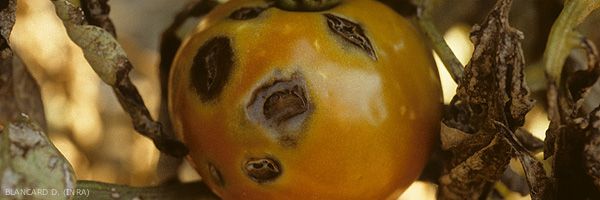
Hail
Following heavy rains, accompanied by hail , it is not uncommon to observe in open field tomato crops significant damage ( hail injuries ), especially when they are grown flat. Indeed, this mode of production makes them particularly vulnerable to hailstones. The latter, by striking the leaflets, cause holes and tears (figure 1), which can greatly alter their photosynthetic potential afterwards. Some leaves can be totally shredded. Note that these different injuries can also promote the installation of various pathogens. Hailstones are also the cause of brownish necrotic changes, more or less pronounced bursts at their point of impact on the stem (figure 2), but especially on the fruits.
In fact, the fruits are particularly vulnerable to hailstones which, when they strike them, cause more or less pronounced bursts at the points of impact. Brownish lesions subsequently appear at the points of impact (figures 3 to 5) more or less suberized, which sometimes recall the corky spots caused by Xanthomonas spp ..
It should be noted that following such damage, many microorganisms described in this chapter, opportunistic or not, may take advantage of the wounds caused by the impacts of hailstones to penetrate more easily into the fruits and subsequently induce rots.





